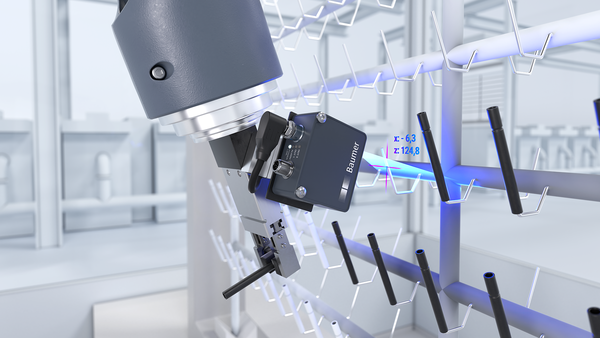7/mar/2024
Positioning made easy with smart 2D profile sensors
How a new sensor class will ease positioning tasks

Smart 2D profile sensors are still considered an insider tip for positioning tasks. Nevertheless, often they prove an economical alternative: easy to integrate and tough in processes.
A common task in automation is quick and reliable positioning of workpieces or device elements. Smart vision sensors or multisensor solutions are a popular choice for such tasks. Less known, yet extremely efficient is the third method as a reliable solution for positioning tasks: smart 2D profile sensors. This technical report presents applications with profile sensors as a time and cost-saving alternative to conventional solutions.
Whether smart 2D profile sensors are suitable for positioning tasks depends on a single criterion: the workpiece or tool must provide a corresponding feature allowing for detection via height profile.
If so, and maybe any distance information being of relevance as well, profile sensors are a good, maybe even better and more economical alternative to smart vision sensors. Examples are edges, gaps (grooves), cable or pipe diameters and positions or even arbitrary shapes that require reliable detection or position identification. Some typical application examples: edge detection, robot positioning, tool positioning.
Potentially higher throughput
At this point, smart 2D profile sensors are not only more economical than other solutions but also allow for higher throughput and hence increased productivity. The explanation is quite simple: smart profile sensors as the OX series from Baumer deliver position data at much higher rates than comparable 2D smart vision sensors. Unlike contrast-based principles, this enables higher object speed and shorter cycle times.
In short, like today's engineers deploy smart vision sensors for detection of a part or marking in a contrast image, the smart 2D profile sensors of the OX series can be used for positioning based on edges, gaps, circles, distance, etc. The OX series is a unique solution if the required information cannot be extracted from a gray-scale image.
Convenient handling is another major benefit of the OX series. By virtue of these features, the OX sensors are ready for use in instant without much effort:
- Quick and easy parameterization and configuration via intuitive web interface.
- The smart measurement toolbox enables entire profile data processing straight in the sensor.
- No need for lighting, which is a critical aspect in contrast-based approaches. The 2D profile sensors provide the relevant positioning information via height profile, independent of contrast.
- No need for data post processing by the control system.
Conclusion
The smart 2D profile sensors of the OX series can be deployed wherever positioning tasks utilize height evaluation or where distance information is required. This way, the new sensor class of the OX series is the economical solution for edge detection and robot or tool positioning.
Further information
Transferência para a imprensa
-
Positioning made easy with smart 2D profile sensors
-
Image

